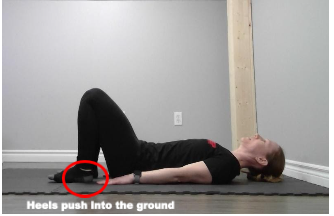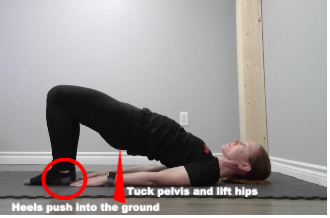
It is common to see individuals who are experiencing back pain. From mothers to athletes, this back pain often stems from the inability to properly activate their glute muscles.
Why is this an issue? When the butt muscles do not activate appropriately, the body relies on other muscles, namely the hamstrings and low back musculature, to do the glutes’ job of extending the hip. Both of these muscle groups are not designed to act as prime movers in hip extension, which leads to an inefficient movement pattern and places excessive stress on the spine.
Enter the Bridge exercise. The Bridge is a great way to strengthen the glute muscles while also increasing mobility and flexibility in the chest, neck, spine, and hips. It helps to strengthen the glutes, working synergistically with the back and hamstrings, while also improving circulation, and relieving stress and mild depression.
How to do the Bridge
Lie on your back with your knees bent, hip distance apart, feet on the floor close to the butt in order to reduce the contribution from the hamstrings during the movement.
Tuck the pelvis up towards the chest, a light posterior pelvic tilt, and squeeze your butt muscles prior to lifting your hips up off the ground.
Push through the heels as you lift, activating the glutes, lower core muscles and the hamstrings. Raising the toes up and pushing through the heels can help increase the glute activation. Do not allow the knees to collapse together, or splay apart during the lifting or holding phase.
Continue to squeeze your glutes as hard as you can for a full five seconds before slowly lowering back to the ground.
Repeat for 20 reps, holding each for 5 seconds. Build to 2 sets of 20 reps then work your way up to 2 sets of 20 reps holding for 10 seconds.
When using the Bridge for flexibility and mobility in the chest, neck and spine, hold the position for 3-5 breaths and roll the shoulder blades back and under you, clasping your hands behind your back.


—–
Article by: Janice Keown, Fitness and Sports Instructor
